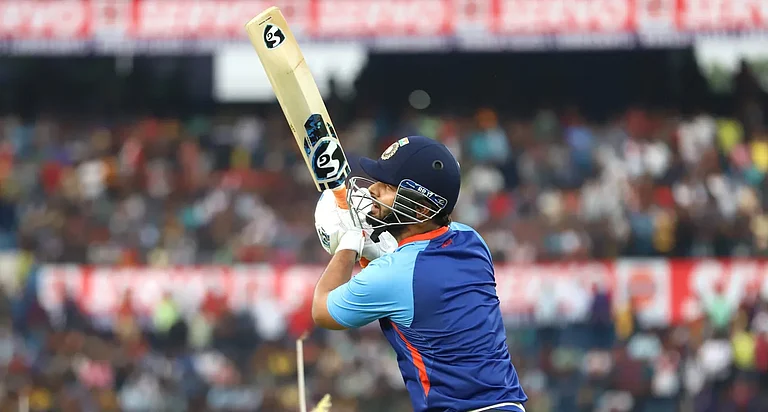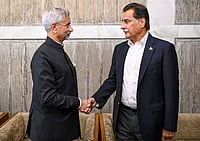Die Is Caste
The image of a young Rajeev Goswami in flames—he tried to kill himself to protest implementation of the Mandal Commission recommendations—shook the nation and spurred a series of similar acts by college students against the policies of then Prime Minister V.P. Singh. The anti-Mandal agitation laid bare the deep caste faultlines and re-shaped the political contours in the country.
The Naked Truth
Five days after 32-year-old Thangjam Manorama was allegedly raped, tortured and killed by Assam Rifles personnel in Manipur, 12 Manipuri women stripped naked on July 15, 2004, in front of the Kangla fort in a daring act of defiance. The protest by the ‘Mothers of Manorama’ shook the country, and forced Assam Rifles to vacate the Kangla Fort, considered a symbol of Manipuri pride.

Here Flows A River
Narmada Bachao Andolan (NBA) began in 1985 against the construction of Sardar Sarovar dam, and later on against the construction of a string of other dams on the river Narmada, including Narmada Sagar dam, estimated to displace lakhs of people. The one unique protest method of people associated with this movement was Jal Satyagrah or immersion in water.
‘Fast’ And Furious
Irom Sharmila held the world’s longest hunger strike against AFSPA, which gives soldiers sweeping powers to arrest without warrants and even shoot to kill in certain situations. She was 28-years-old when she began her protest soon after ten civilians were shot and killed at a bus stop in Imphal valley of Manipur on November 2, 2000. She ended her fast on August 9, 2016.

Mother Nature Strikes Back
Recognised as being perhaps the first ‘eco-feminist’ movement of India, as women formed the core of the protest group, the Chipko movement of the 1970s began with the women in Chamoli (Uttarakhand) embracing trees to prevent them from being felled to make way for a manufacturing plant. The movement was successful in saving many forests of the country.

Crusade Against Corruption
In 2011, activist Anna Hazare’s anti-corruption movement captured the imagination of the people and led to a mass movement whch ultimately hastened the fall of the UPA II government in the subsequent general elections. The movement also heralded the arrival of a brash, young politician—Arvind Kejriwal.

Unbridled Fury
On the morning of December 17, 2012, the nation woke up to the news of the gangrape and torture of a 23-year-old woman on a moving bus in south-west Delhi. The sitting government of the time found it hard to contain the fury that the news sparked, spurring thousands of protestors, mostly students, to march right up to Raisina Hill. The then Prime Minister Manmohan Singh addressed the nation appealing for calm. Subsequently, the Nirbhaya Act was passed by Parliament widening the definition of rape. A Rs 1,000-crore Nirbhaya fund was created towards safety schemes for women.
Discordant Notes
In September 2013 a concert, “Haqeeqat-e-Kashmir” (the reality of Kashmir) organised by civil society members led by human rights activist Khurram Parvez to protest conductor Zubin Mehta’s concert, is considered one of the landmark protests in Kashmir’s history. After 2008, when stone-throwing protests were taking place at mass scale, Haqeeqat-e-Kashmir was a unique protest to counter the government’s normalcy narrative on Kashmir.

Not A Rat Race
In March, around 80 farmers from Tamil Nadu, which was suffering from an agricultural crisis following a drought, came to Delhi’s Jantar Mantar to demand farm loan waiver and a relief fund. Between March and October 2017, the farmers, in order to attract public attention towards their plight, flogged themselves, held dead rats in their mouths, ate their faeces and drank their urine. The farmers went back after many of them were reported sick. It was one of the most unique protest by farmers in the country.

United Colours Of Love
“Gays of the world unite’, ‘we have nothing to lose but our chains”—these were some of the earliest slogans voiced against Section 377 in India, back in the early 90s. The section threatened imprisonment, even a lifetime sentence, for those who engaged in “unnatural offences” or intercourse “against the order of nature”. Mass awareness campaigns and queer pride marches were held throughout the country and legal battles were fought for nearly 3 decades before the apex court scrapped it in 2018.

Frontier Tales
In what was the biggest students’ movement in India of that time, the All Assam Students Union (AASU) led a six-year-long non-violent mass movement demanding that ‘foreign nationals’ be removed from electoral rolls and be deported from Assam. Thousands of youth of Assam boycotted the 1980 general elections in protest when their demands were not met. In one act, a young protester cut open his chest with a blade and wrote on a Guwahati street, “We will give blood, not oil’. The agitation ended when the government of India signed the Assam Accord in 1985.
(This appeared in the print edition as "Blood, Sweat and Tears")
ALSO READ


























